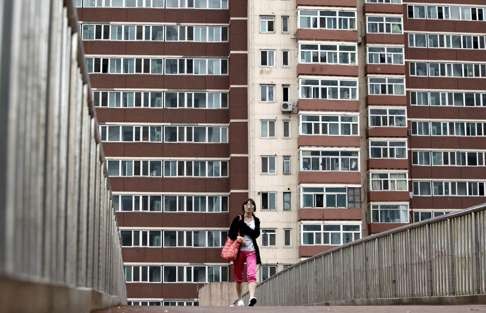Regulators begin the delicate task of cooling, but not stalling or crashing, China’s sizzling property market
21 cities have introduced fresh home-buying curbs, after prices nationally increased at their fastest pace in six years in August, and continue rising

The Chinese authorities are taking a top-down approach to deflating the bubbles now appearing all over the property market, but the regulators are well aware that one wrong move could cause a price crash, similar to what ignited last year’s stock market rout.
“The speed of leverage build-up has been faster than expected and it’s getting into risky territory,” says David Cui, a strategist with Bank of America Merrill Lynch.
“How to manage a soft landing without sparking a hard crash in the property market is becoming a tough balancing act.
“In last summer’s equity rout the real leverage was hard to assess, and the market crashed when the regulator started to tighten shadow margin lending.”
China’s financial regulators, including the People’s Bank of China, the China Banking Regulatory Commission and the China Securities Regulatory Commission (CSRC) are planning a joint crackdown on speculative funds flowing into the property market in violation of current rules, Bloomberg quoted an unnamed source on Tuesday morning.
“It is hard to define which funds are speculative and which are not,” he said.
“For example, an industrial company may issue a bond to fund working capital and then use the money to buy land. At the end of the day, money is fungible and it is tough to trace the ultimate use of the proceeds.”
A dramatic change in the regulatory attitude of central and local governments has already been cooling the sizzling property market, which saw home prices across China rising at their fastest pace in six years in August.
On Tuesday October 4, the authorities in at least 21 cities had introduced fresh home-buying curbs, ranging from raising down payments for first and second homes, to strengthening the purchase restrictions by ruling some potential buyers were ineligible.
According to a report issued by the China International Capital Corporation this week, during the week of October 3-9, housing transaction volumes halved in 30 cities, as market sentiments dropped.

“Sales could slump and cash flow dry up under the government-led clamp down. Companies with high debts and ‘land king’ projects are facing the biggest pressure.
“The government is also making preparations for an interest hike in the US. If asset prices and leverage ratios become too high in China, the government would have no room to increase its interest rates, and that would restrict the possible counter-measures it could use, in the event of a Fed rate cut,” he added.
Sales could slump and cash flow dry up under the government-led clamp down. Companies with high debts and ‘land king’ projects are facing the biggest pressure
In fact, some analysts believe the level of funds flowing into the property sector is already slowing.
A report from Bank of America Merrill Lynch on Tuesday reminded investors to keep a close look out for early signs of slowdown in the financial, property and materials sectors, adding that early indications are already appearing that growth in the seven biggest funding sources for the property market is slowing.
Six of those – developer loans, entrusted loans, trusts, onshore bonds, bank-managed wealth management products, and A-shares funding through initial public offerings and share placements – have already seen their growth rates peak between mid-2015 and mid-2016, with developer loans and bonds slowing sharply in 2Q16,
The seventh, mortgages, continued to power ahead until at least August, the report said.
The aggregate total from the seven had reached 35 trillion yuan by June 2016, representing just under a quarter of Total Social Financing (TSF).
They accounted for 69 per cent of TSF in the second quarter, up sharply from 22 per cent in 1Q14, according to the Merrill calculations.
“In the past, property funding and property transaction volumes correlated well…The early signs that growth in funding may be slowing might be dynamics in the loan, entrust loan, trust and bond markets, and there are early signs that funding growth may be slowing,” the report said.
On the other hand, the continued powering ahead of mortgage growth in the second quarter in 2016, in contrast to other cooling down funding activities, could be caused by companies,
including lenders and borrowers, “tending to be more sensitive than mortgage borrowers to
changes in market conditions, including regulatory changes”, it argued.
“We believe it is only a matter of time before that trend in property funding will also turn, if it hasn’t already... Such a high portion of TSF ending up in the property sector is an unsettling sign and unsustainable, in our view.”